Ornamental edibles: 10 beautiful varieties for your vegetable plot
Rethink your garden and use the space to grow ornamental edibles that look as good as they taste

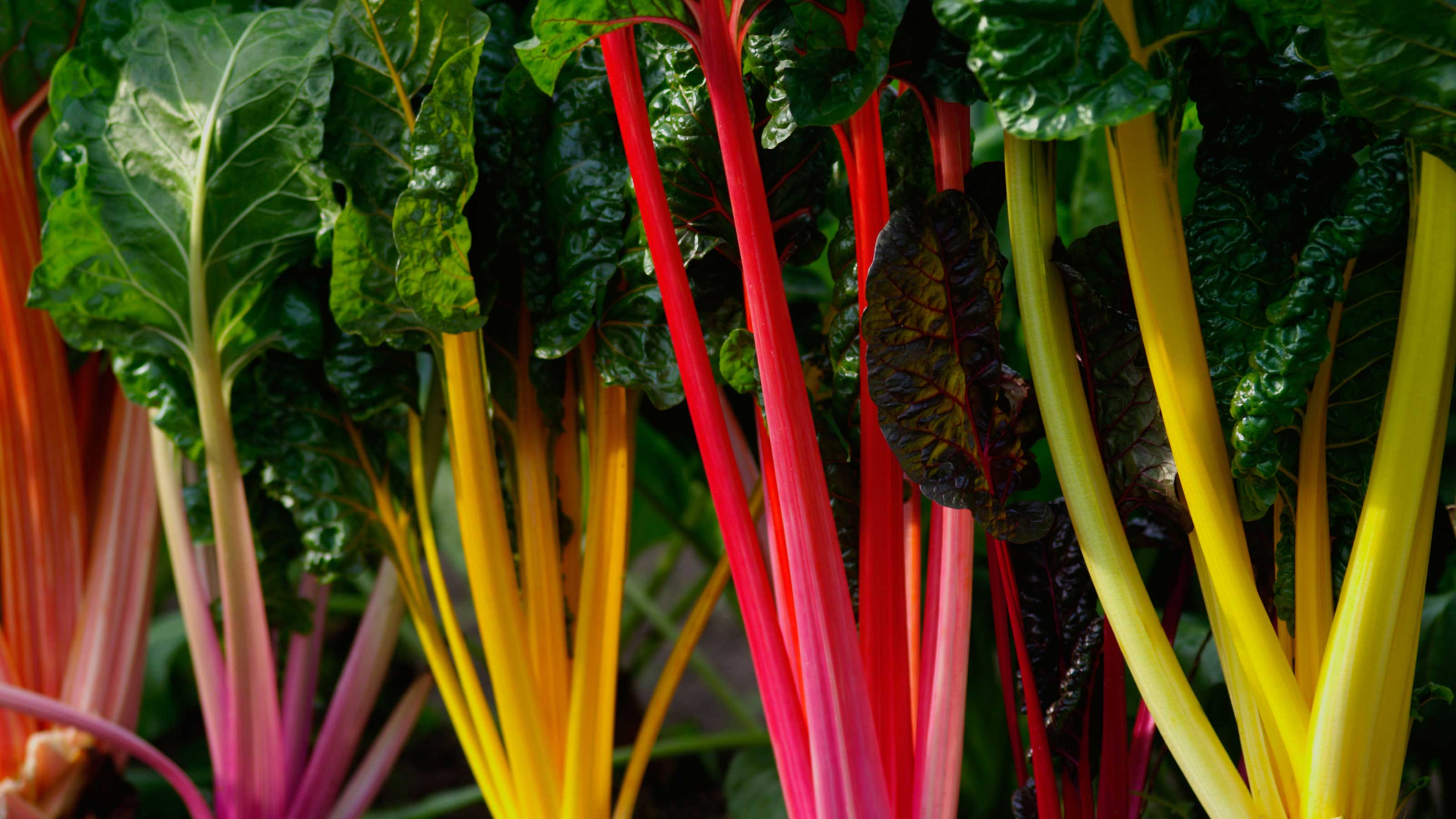
By planting ornamental edibles, you can enjoy a beautiful garden as well as the process of harvesting and eating tasty homegrown crops.
We ask a lot from our outdoor spaces and often aspire to good design, year-round interest, wildlife areas and produce all from one plot. This is rather like taking the essence of a country estate with its contours and lakes, shrub borders, parterres and walled kitchen garden and then cramming it into a postage stamp. Can you have it all? Of course you can – based on the French-style potager garden.
The modern potager is usually a small, well-designed space. As Joy Larkcom suggests in her book Creative Vegetable Gardening, ‘It seems to me appropriate to steal the word "potager" and apply it today to any vegetable garden, of whatever size, which has been touched with the paintbrush of imagination.'
Purely ornamental trees and shrubs are replaced by those producing edible fruits, while groundcover is provided by herbs, perennial globe artichokes, asparagus and strawberries. Shorter-term crops chosen for beauty as well as abundance and flavor slot into formal, sunny beds bisected by pathways. A smattering of flowers for cutting, and to attract beneficial insects, as well as edible blooms such as nasturtiums, are not out of place. Bare corners can be filled with clusters of pots packed with beetroot, kohl rabi or climbing sugar snap peas.
Even among ordinary types of veg, there are especially attractive cultivars. One year I grew a batch of leeks whose blue-green leaves were so handsome my husband requested some for his ornamental border. Meanwhile, peas, beans and small-fruited squash can make attractive climbers for temporary wigwams of poles or canes.
One potager pitfall is leaving harvesting longer than usual for fear of spoiling the display. Do set crops slightly closer than normal and keep picking leaves, pulling roots and taking pods until the whole crop has been harvested at the peak of freshness. Canny potager gardeners raise replacements in modules or pots ready to fill gaps.
Grow these ornamental edibles to elevate your space
Whether you're growing in raised beds, containers, or borders, plan now to fill your garden with attractive and tasty ornamental edibles for year-round color and produce.
1. Runner bean ‘St George’
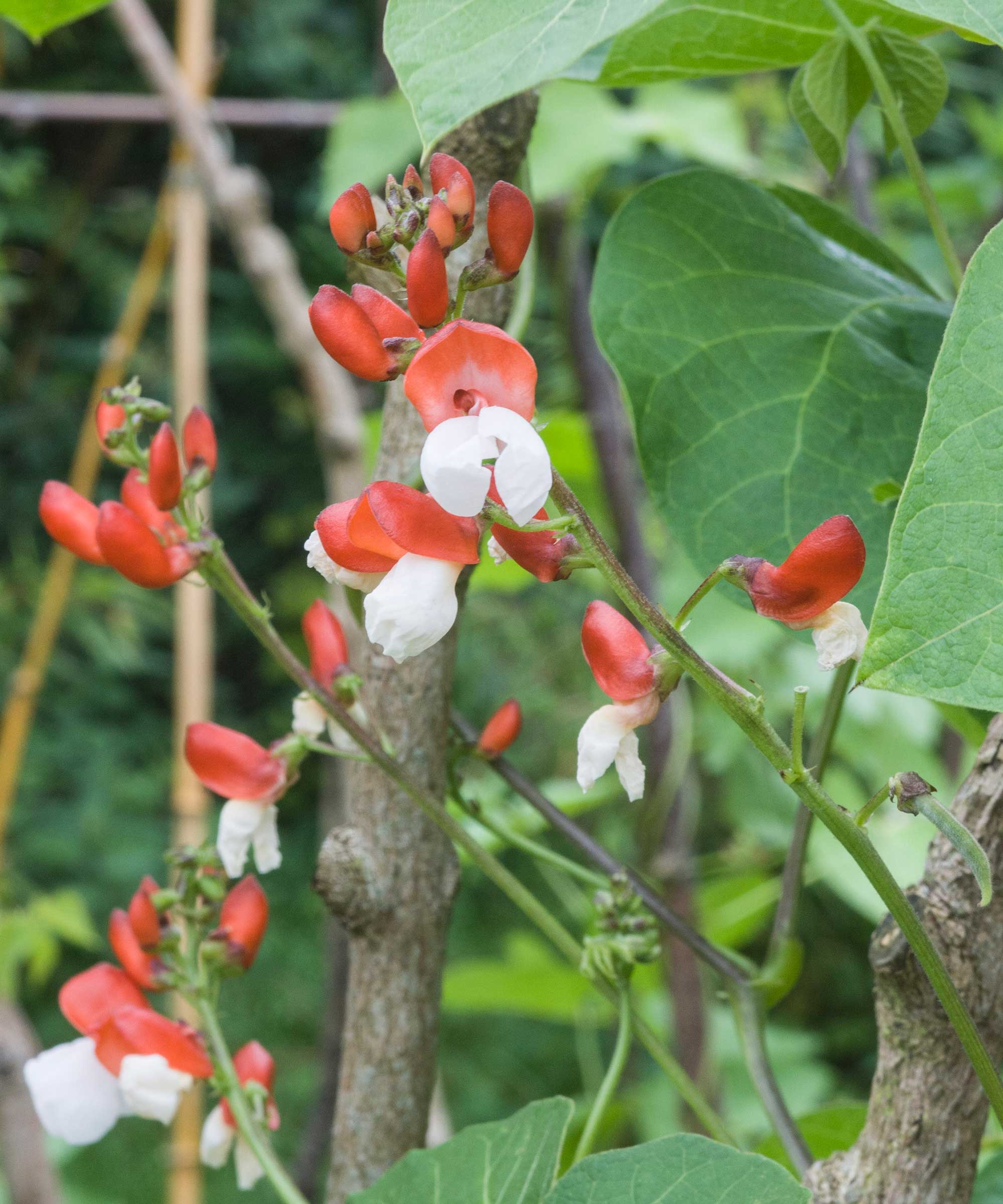
- Height: 7ft (2m)
- Spread: 18in (45cm)
- Hardiness: USDA 10b
This climbing runner bean produces bicolored red and white flowers before setting a delicious crop. The beans are up to 12in (30cm) long and mature in clusters for easy picking.
Other runners with pretty blooms include white-flowered ‘Moonlight’ and peachy pink ‘Celebration’.
Sow into modules from late spring to mid-summer, and plant out into deeply cultivated soil.
2. Potato ‘Maris Peer’
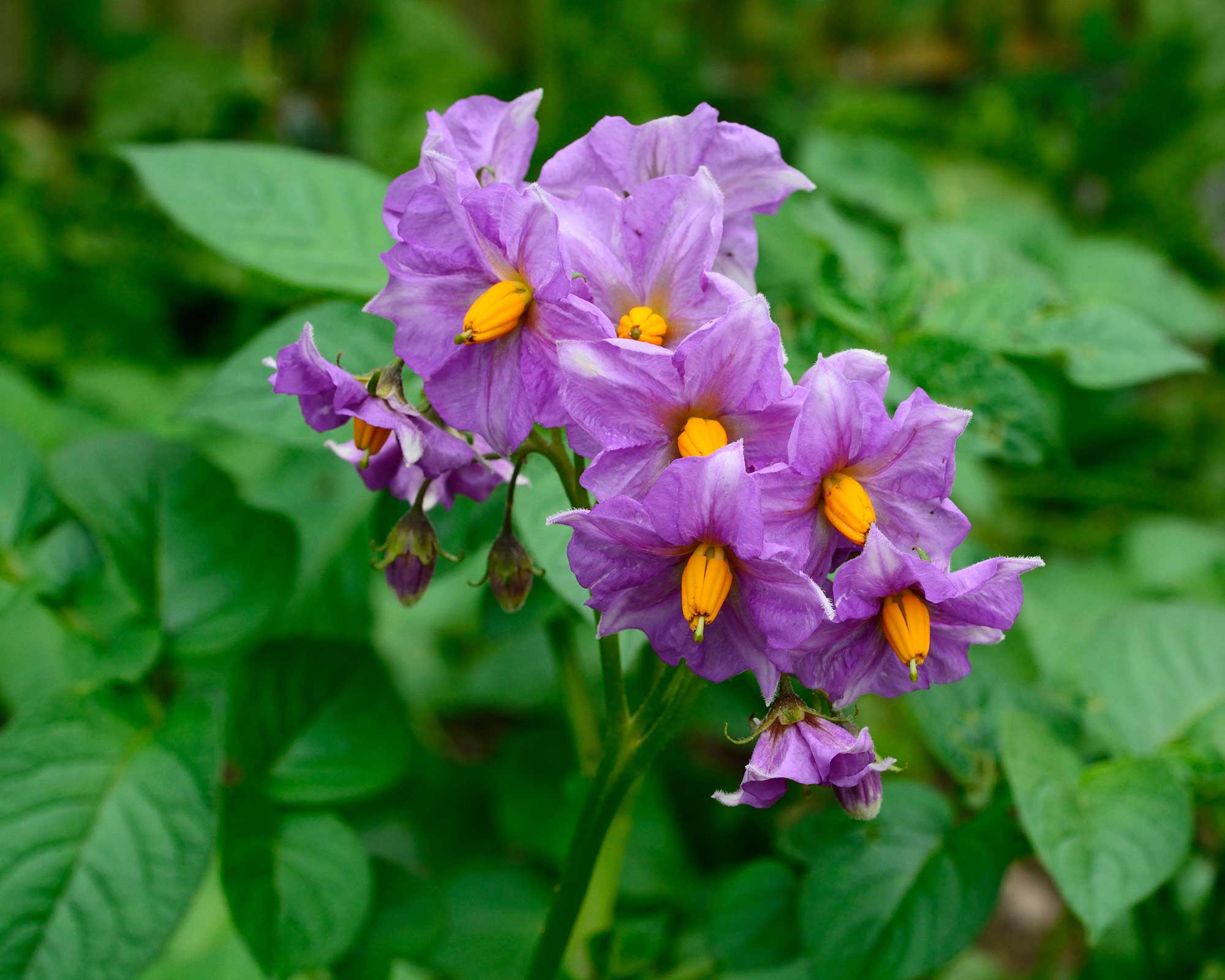
- Height: 2ft (60cm)
- Spread: 18in (45cm)
- Hardiness: USDA 10b
Originally popular for canning, the tubers of this second early potato are slightly smaller than average, well-flavored, and retain firmness when boiled.
Attractively domed plants are decorated by plentiful, fragrant purple flowers.
Plant slightly closer than normal in mid-spring. Tubers will usually have reached full size if and when potato blight occurs.
3. Pea ‘Blauwschokker’
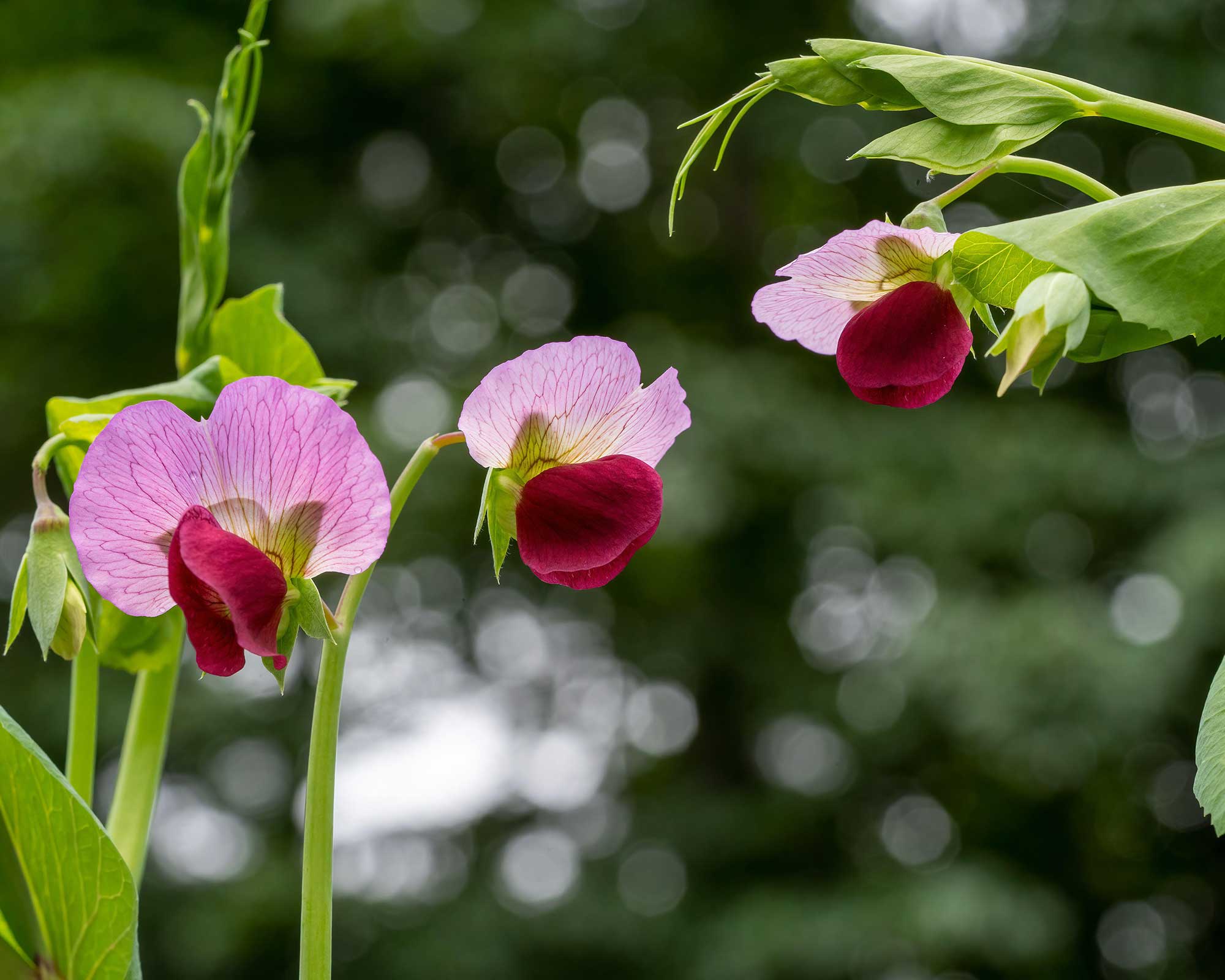
- Height: 5ft (1.5m)
- Spread: 18in (45cm)
- Hardiness: USDA 10b
Even ordinary white-flowered peas are a beautiful sight, especially when their translucent pods are just setting.
For years my favorite has been ‘Onward’ for productive, tasty peas. Yet some produce purple flowers and pods, such as mangetout ‘Shiraz’, sugar snap ‘Purple Magnolia’ and this tall, decorative heirloom, dual-purpose type whose pods are good as mangetout or for delivering green peas.
4. White currant ‘Blanka’

- Height and spread: 4ft (1.2m)
- Hardiness: USDA 6b/7a
The small flowers of this currant bush attract many pollinating insects and set into dangling strands of translucent white fruits ready in mid to late summer. These need to ripen fully before they are palatable to eat raw and will require meshing if there are lots of blackbirds around.
Prune by thinning out older stems during winter.
5. Kohl rabi ‘Kolibri’
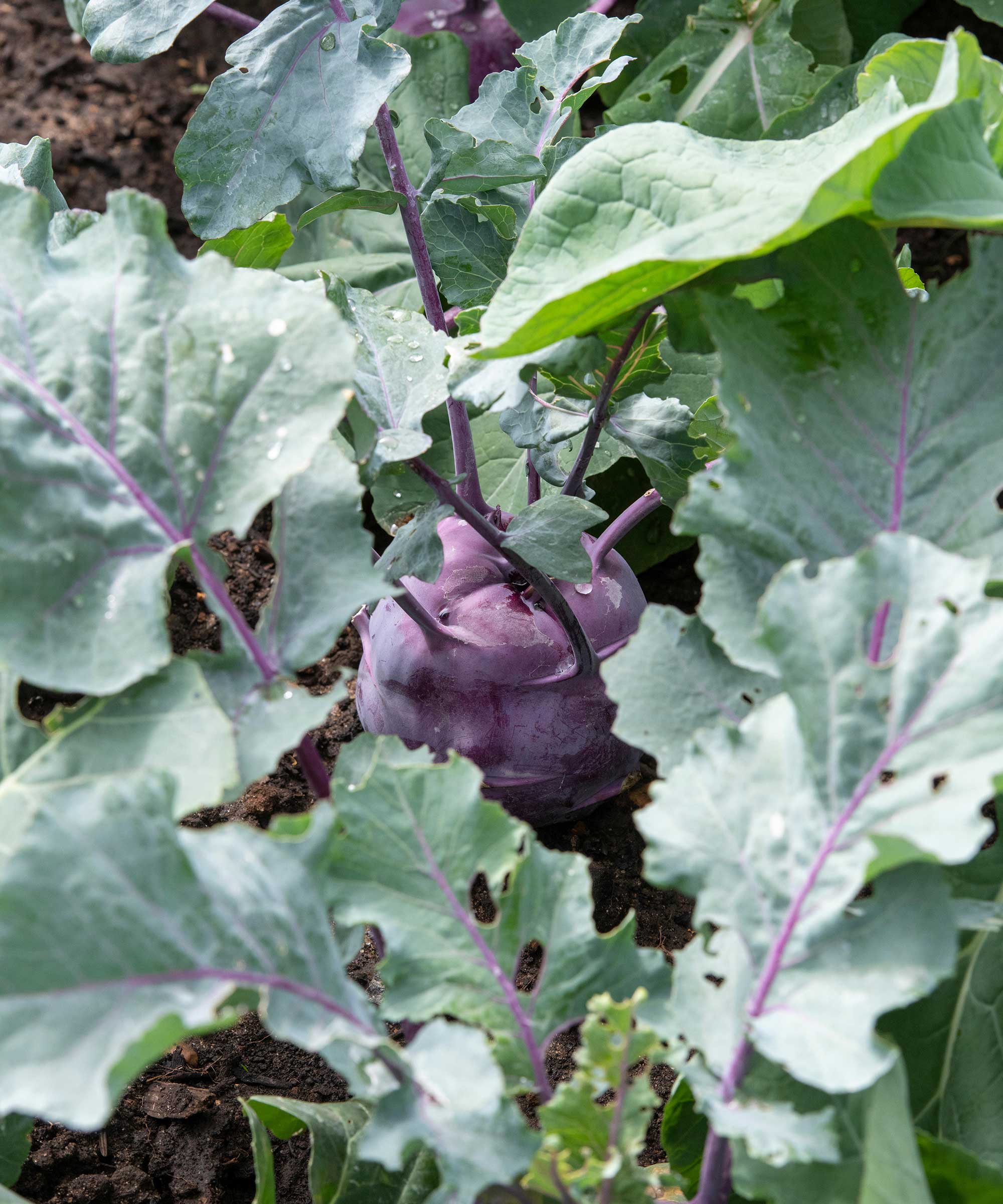
- Height and spread: 14in (35cm)
- Hardiness: USDA 9b/10a
This odd-looking veg, whose swollen stem sits above soil level, is mild and delicious raw or cooked. Plus, it's easier to grow and more drought-resistant than the closely-related swede and turnip.
There are green and purple varieties, with the latter believed to be the hardiest. Sow small quantities from spring to midsummer and harvest when young.
6. Chard ‘Bright Lights’
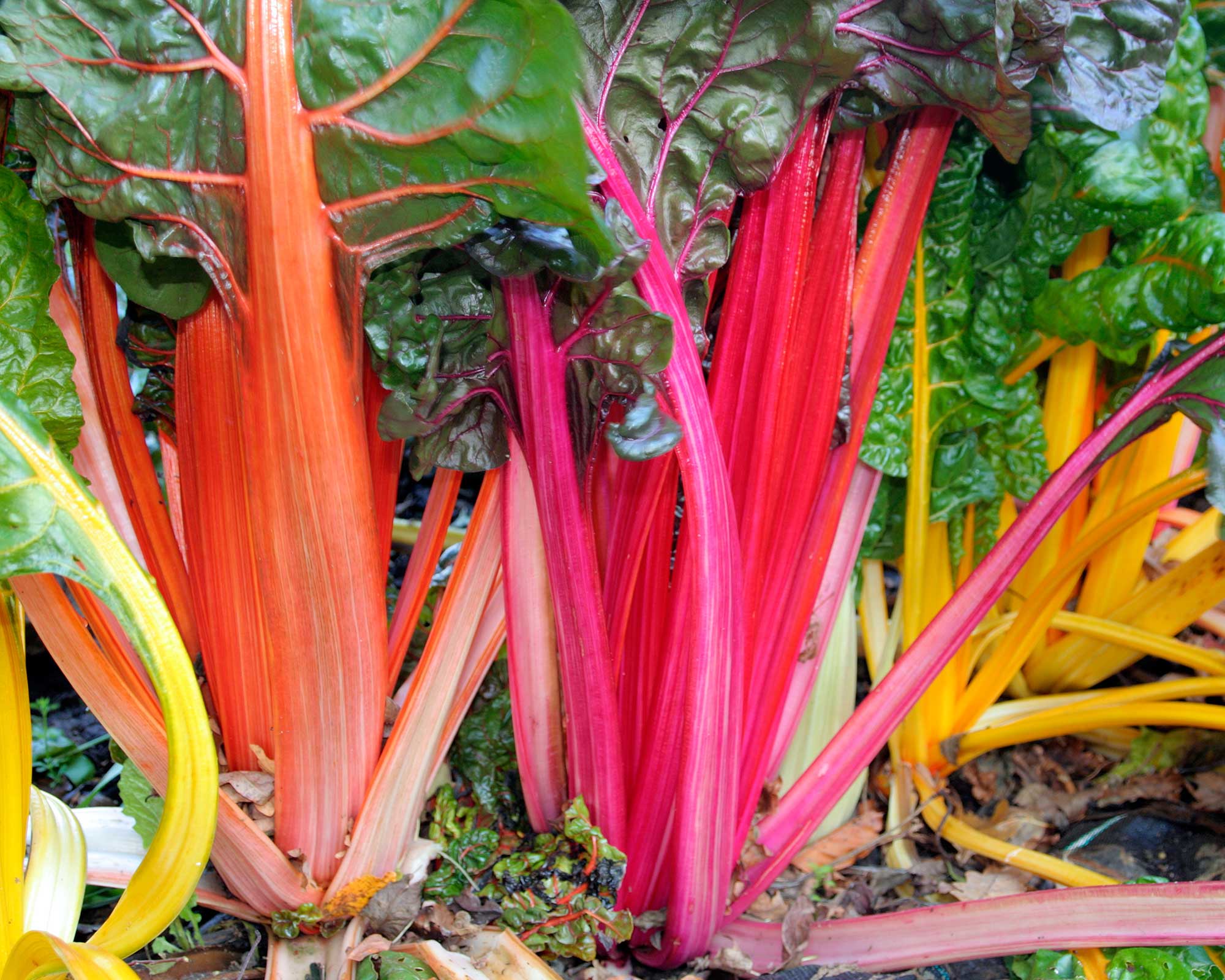
- Height and spread: 18in (45cm)
- Hardiness: USDA 8b/9a
Related to beetroot and perpetual spinach, leafy Swiss chards are a long-lasting crop and one of the easiest vegetables to grow.
Sowings are made from spring to autumn, with midsummer optimum, as resulting plants will last through to spring.
If you like thick stalks, go for ‘Fordhook Giant’, but I love the narrower, colorful blades and midribs of ‘Bright Lights’ (you can buy the seeds from Amazon), especially from autumn to spring.
7. Thornless loganberry ‘Ly 654’

- Height and spread: 2m (7ft)
- Hardiness: USDA 7b/8a
For a small garden on well-drained soil, a thornless loganberry is perfect to train over a fence, wall or across parallel wires stretched between posts. Expect white blossom and deliciously sweet fruits.
More robust are thornless hybrid blackberries such as pink-flowered ‘Chester’, but beware as they can become vigorous. Cut out old canes after fruiting and tie in new ones.
8. Leeks ‘Toledo’
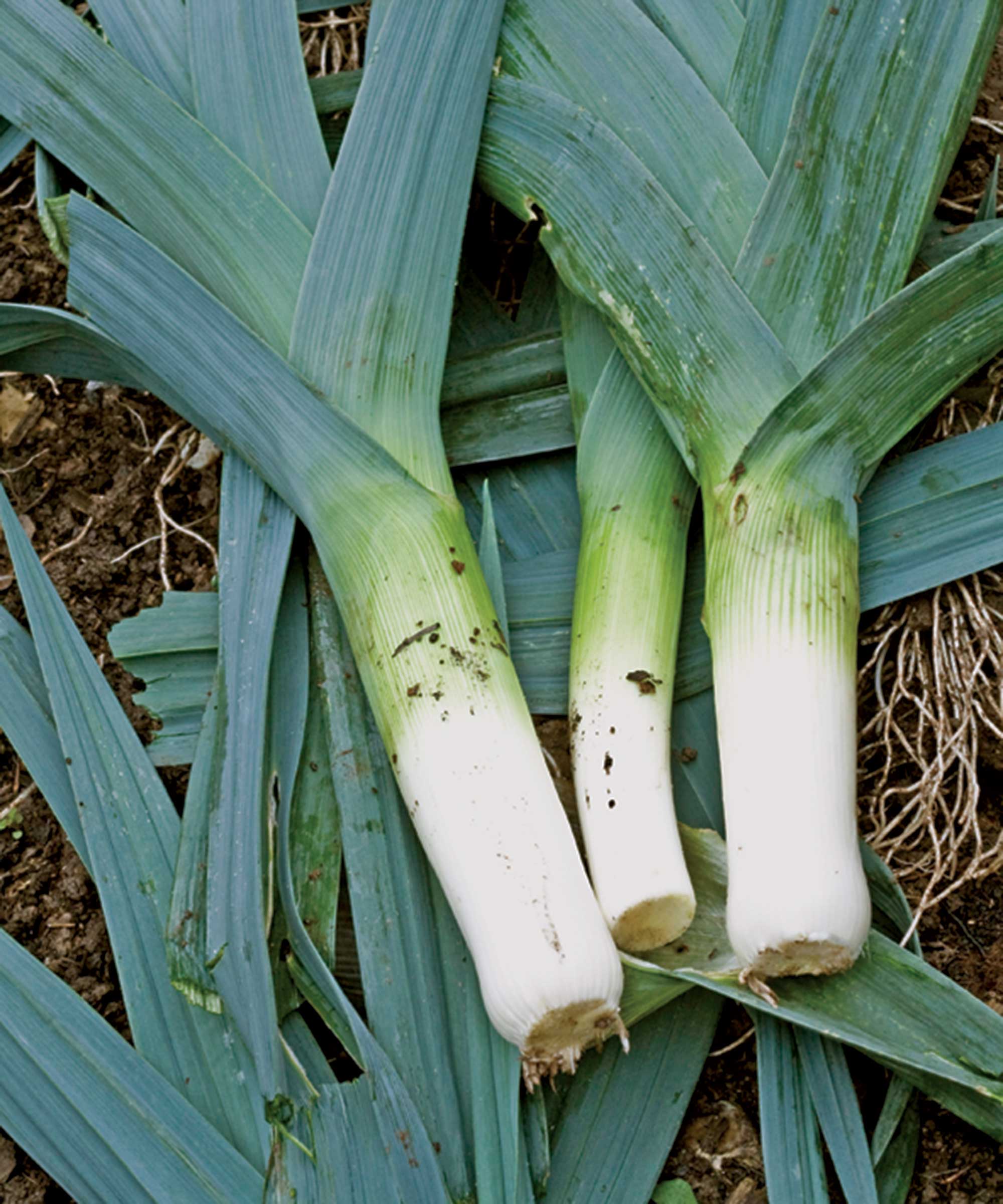
- Height: 18in (45cm)
- Spread: 12in (30cm)
- Hardiness: USDA 7b/8a
For attractive foliage, choose leeks with blue-green leaves and the ability to stand well during winter. This high-yielding late variety will not disappoint and neither would the French ‘Bleu de Solaise’.
Raise young transplants in spring, either under cover or in a seedbed. In early summer, set into deep drills or drop into individual holes.
9. Blueberry ‘Bluecrop’
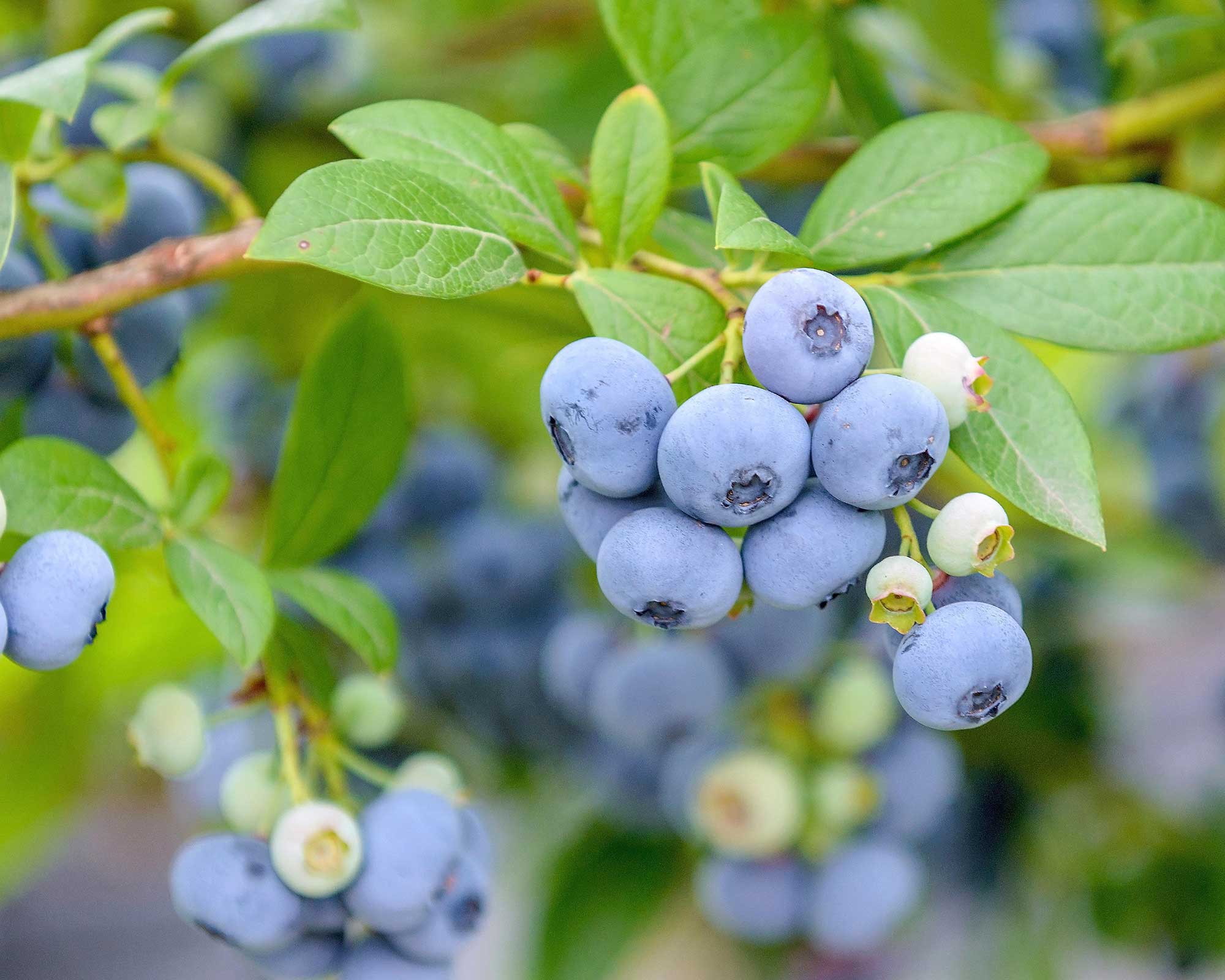
- Height: 5ft (1.5m)
- Spread: 3ft (1m)
- Hardiness: USDA 6b/7a
Blueberries give you pretty bell-shaped flowers attractive to insects; delicious fruits; and red autumn tints – but they do need acidic soil. Fortunately, they grow well in generous containers of ericaceous compost.
For bumper crops of fruit, grow two compatible types together. The cultivar ‘Duke’ will act as a pollinator for ‘Bluecrop’ (both available on Amazon). Occasionally prune back old stems when dormant.
10. Mustard ‘Red Frills’
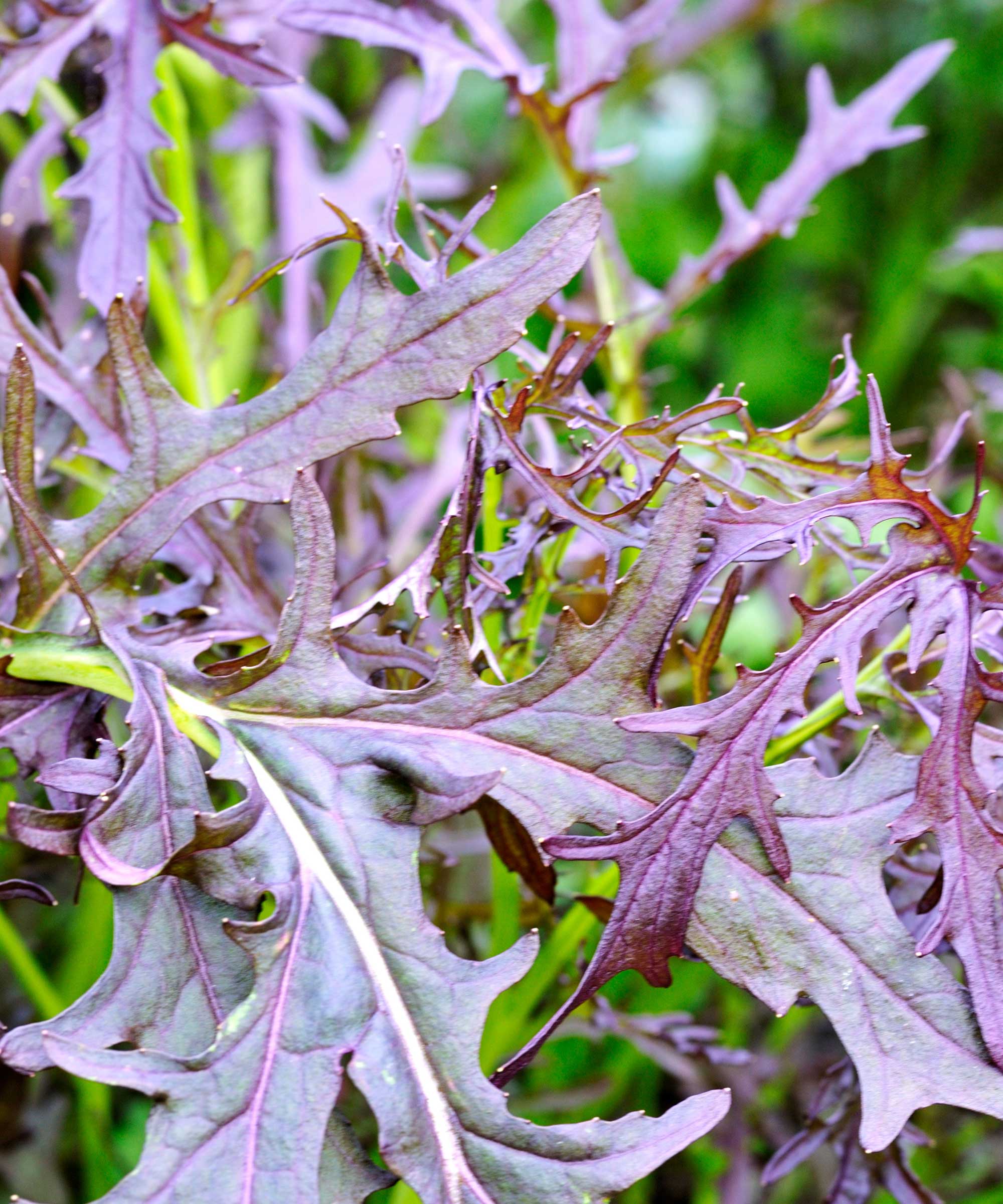
- Height: 12in (30cm)
- Spread: 10in (25cm)
- Hardiness: USDA 7b/8a
This is just one of several mustards with pretty, spicy-flavored frilled or indented green and reddish-purple leaves. They're easy choices for the kitchen garden, as can be sown almost year-round as quick cut-and-come-again crops, or space them 6-8in (15-20cm) apart for larger, longer-lived plants.
Spring sowings may run to seed but those made from summer and autumn can be nursed through winter to spring.
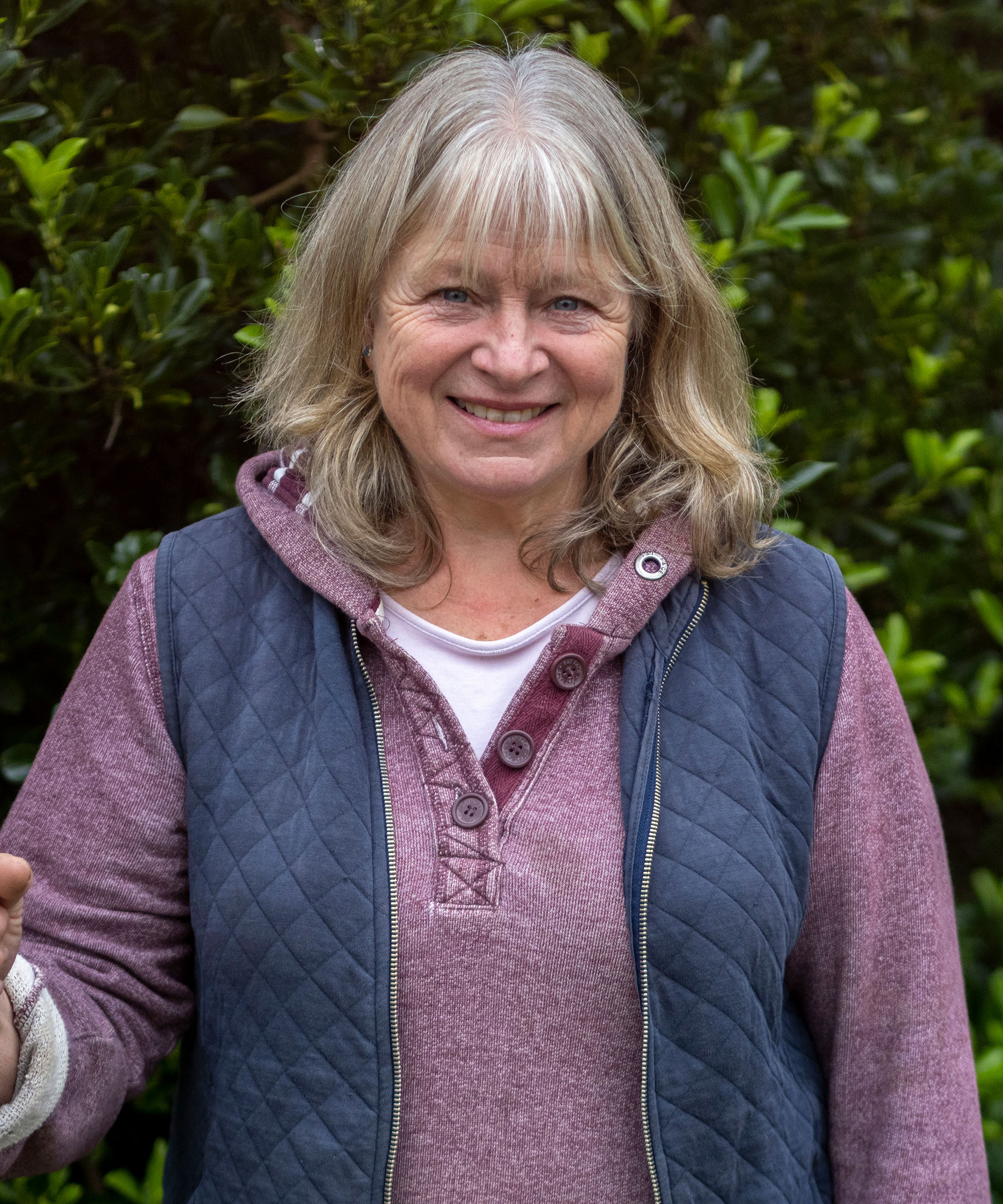
Having trained at Kew Gardens in London, worked in parks department nurseries and as Glasshouse Supervisor at RHS Wisley, Anne has been a freelance horticulturist since 1986. Anne writes for Amateur Gardening and has been a regular panelist on BBC Radio 4’s Gardeners’ Question Time for 27 years. A large plot full of wildlife habitats, edible and ornamental plants is Anne’s workshop and inspiration.
